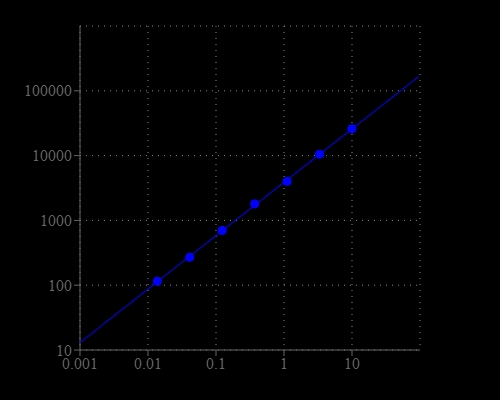Amplite® Fluorimetric Xanthine Oxidase Assay Kit
Red Fluorescence
Xanthine oxidase (XO) is an enzyme that catalyzes the oxidation of hypoxanthine to xanthine and can further catalyze the oxidation of xanthine to uric acid. It plays an important role in the catabolism of purines. Xanthine oxidase is normally found in liver and jejunum. During severe liver damage, xanthine oxidase is released into blood, so a blood assay for XO is a way to determine if liver damage has happened. Xanthinuria is a rare genetic disorder where the lack of xanthine oxidase leads to high concentration of xanthine in blood and can cause health problems such as renal failure. The Amplite® Fluorimetric Xanthine Oxidase Assay Kit provides a quick and ultrasensitive method for the measurement of xanthine oxidase activities. It can be performed in a convenient 96-well or 384-well microtiter-plate format and easily adapted to automation without a separation step. In the assay, xanthine oxidase catalyzes the oxidation of purine bases, hypoxanthine or xanthine to uric acid and superoxide , which spontaneously degrades to hydrogen peroxide (H2O2). The kit uses our Amplite® Red substrate which enables a dual recordable mode. The fluorescent signal can be easily read by either a fluorescence microplate reader or an absorbance microplate reader. With the Amplite® Xanthine Oxidase Assay Kit, we have detected as little as 0.15 mU/mL xanthine oxidase in a 100 µL reaction volume.


| Catalog | Size | Price | Quantity |
|---|---|---|---|
| 11304 | 200 Tests | Price |
Spectral properties
| Excitation (nm) | 571 |
| Emission (nm) | 584 |
Storage, safety and handling
| H-phrase | H303, H313, H333 |
| Hazard symbol | XN |
| Intended use | Research Use Only (RUO) |
| R-phrase | R20, R21, R22 |
| UNSPSC | 12171501 |
Instrument settings
| Fluorescence microplate reader | |
| Excitation | 540nm |
| Emission | 590nm |
| Cutoff | 570nm |
| Recommended plate | Solid black |
Documents
Contact us
| Telephone | |
| Fax | |
| sales@aatbio.com | |
| International | See distributors |
| Bulk request | Inquire |
| Custom size | Inquire |
| Technical Support | Contact us |
| Request quotation | Request |
| Purchase order | Send to sales@aatbio.com |
| Shipping | Standard overnight for United States, inquire for international |
Page updated on December 12, 2025

